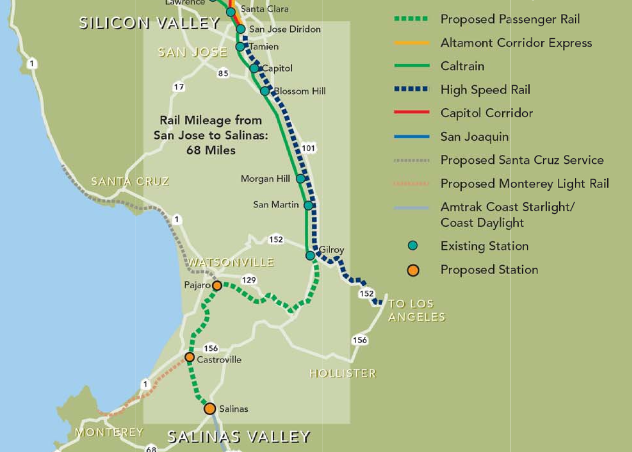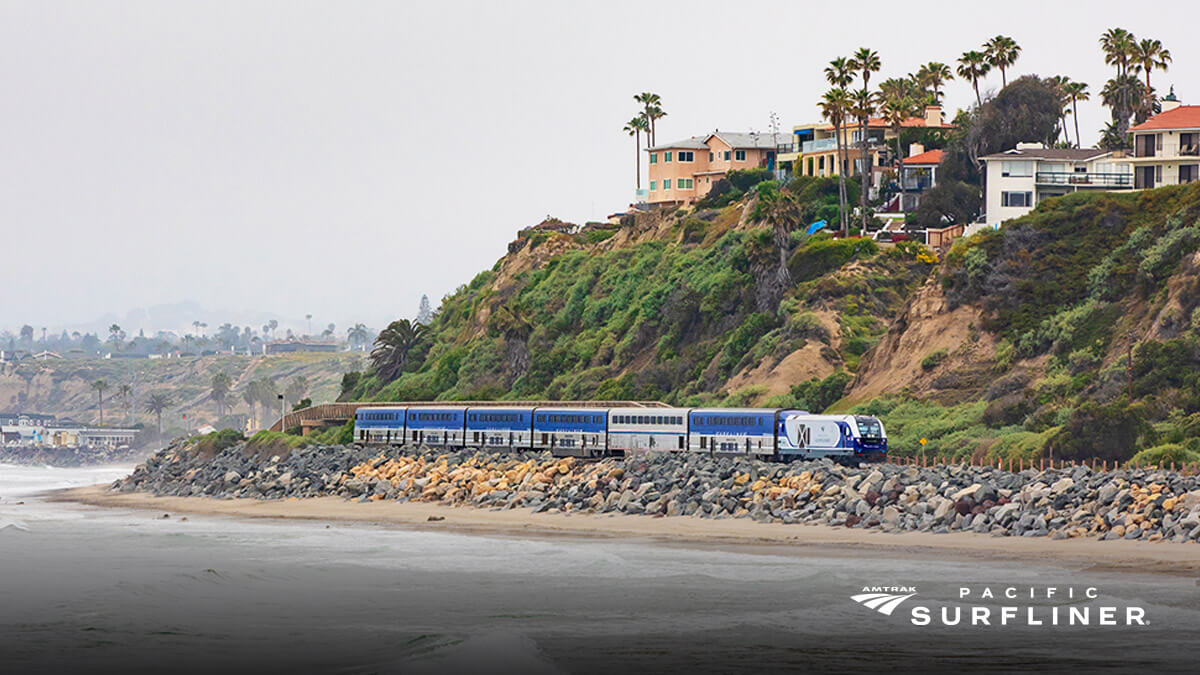The Federal Railroad Administration announced a handful of rail grants this week, among them $3 billion for the California's High-Speed Rail program (CAHSR) and another $3 billion for the Brightline West High-Speed Rail from Las Vegas-to-Southern California. Those were not the only grants from the Federal-State Partnership for Intercity Passenger Rail Grant Program - a full list is available here - and they were also not the only recent rail funding announcements for California projects.
Below is a brief roundup of some of the other projects that will be receiving money.
High Desert Corridor
The High Desert Corridor Intercity High-Speed Rail project got a big boost this week when the California Transportation Commission (CTC) awarded it $8 million from California's Transit and Intercity Rail Capital Program (TIRCP) for preliminary engineering work.
The project also received a $500K grant from the Federal Railroad Administration's Corridor Identification and Development Program.
The High Desert Corridor project is an early-stage plan to connect CAHSR and Brightline West via a 54-mile high-speed rail route between Victor Valley and Palmdale. It will be a critical link in California's eventual high-speed network.
The federal grant will help the project develop a scope, a schedule, and cost estimates for the project. This grant will be matched by an equal amount from L.A.'s Measure M sales tax funds.
More information is available at the project's website.
LOSSAN Rail
The CTC also awarded $15 million for work on the rail route that has been experiencing severe problems from storms and erosion along the cliffs in San Clemente. The money will "help develop solutions to ongoing climate-related service suspensions along seven miles of the LOSSAN Rail Corridor between the cities of San Clemente and Dana Point."
This was one of several grants for "climate resiliency" made by the CTC from the Local Transportation Climate Adaption Program this week. Other projects include:
- Planning a new road into and out of the town of Paradise, as an "emergency egress" option
- Bridges on Indian Canyon Road in the Coachella Valley
- Work on BART rail resiliency to temperature differences in Contra Costa County
- Work on Orange County rail line resilience
The full list of those grants is available on the Commission’s website.
This is important work, but for some reason lacks the same sense of urgency that brought quick repairs to the I-10 Freeway after that fire last month.
Note that the Senate Select Committee on LOSSAN Rail Corridor Resiliency will be meeting on Monday, December 11, at 9 a.m. More information here.
Monterey County Rail Extension
The Transportation Agency for Monterey County (TAMC) is lining up for future funding. At its board meeting this week, several projects were approved for its list for TIRCP funding under SB 125. This was a budget bill this year that added one-time funding for transit and zero emission transportation projects, to be distributed by formula. TAMC is slated to receive $44.5 million over two years in TIRCP formula funds and $8 million over four years for zero emission transit capital projects.
The board voted to split the formula funding 50/50 between rail and bus, and approved the following in its planned Monterey County Rail Extension, which will extend passenger rail service from Santa Clara County into Salinas, with new multimodal hubs in Pajaro and Castroville, served by local and regional rail and buses.

- $8.8 million for design of a future multimodal rail station at Pajaro, part of the planned Monterey County Rail Extension
- $7.5 million for a King City rail platform
- $9.7 million for a station in Salinas
- $4.7 million for the Coast Rail Corridor Positive Train Control project
These allocation requests are due to the state by December 23, so other jurisdictions are also currently working on their project lists.
Around the State: More TIRCP
In addition to the High Desert Corridor project noted above, the CTC allocated numerous other already-approved funds from the Transit and Intercity Rail Capital Program. The list of allocations - for thirteen projects totaling about $75 million - is available via the CTC agenda. (One of the projects listed, the "Sweet Home Antelope Valley - Where the Skies Are so Blue" project to buy land for an EV charging station, was withdrawn before the allocations were approved).
Among the approved allocations are
- $3.4 million for a environmental clearance for part of the project to expand passenger rail service east of Sacramento
- $23 million for new low-floor vehicles for Sacramento light rail
- $25 million for the Valley Link project development, a planned connection from BART into the San Joaquin valley
- $2 million for environmental clearance for the Pajaro/Watsonville multimodal station
- $2.1 million for the Coastal Express/Pacific Surfliner Peak Hour Service Expansion and Integration Project






